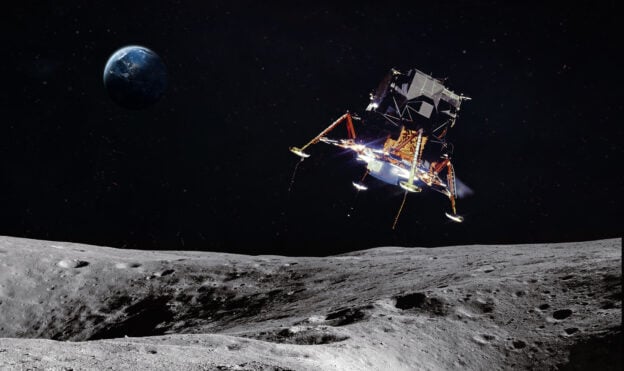The country is now the fourth to reach the moon.
The Chandrayaan-3 probe has successfully landed on the moon’s precious south pole, where no other nation has managed to position its technology so far.
Despite the fact that this place has become one of the most coveted destinations in space exploration, no other country had previously been successful. It is important to note that this achievement follows Russia ‘s failed attempt just days ago and all this has been possible thanks to a low-cost aircraft.
The successful arrival in the south polar region of our satellite by India’s Chandrayaan-3 space probe marks a significant milestone in lunar exploration. After a 40-day journey since its launch on July 14 using the largest rocket ever built in India, Chandrayaan-3 performed a complex descent maneuver onto the satellite’s south face, which has never been explored before.
Maneuvers of the Chandrayaan-3 Probe
The Indian Space Research Organization (ISRO) began crucial landing maneuvers at around 5:44 p.m. local time, using the module called “Vikram”, whose name means “brave”. These maneuvers culminated in a final run of approximately 25 km over a period of 20 minutes full of expectation.
According to the director of ISRO, Sreedhara Somanath, this phase of the landing has been identified as the most delicate and crucial of the process.
During the manoeuvre, the rate of descent was around 1.68 km per second, while the Chandrayaan-3 has changed from horizontal to vertical position as the descent progresses.
“It is a very interesting calculation from a mathematical point of view. We have done a lot of simulations. This is where we had the problem last time,” Somanath said to explain the reasons that led to the failure of the previous mission.
Chandrayaan-3’s journey since liftoff on July 14 has spanned a period of 40 days. This was done with the use of the largest and heaviest launch rocket ever used by India.
Despite the powerful initial force, the mission’s propulsion proved insufficient to go directly to a specific point on the Moon. Consequently, the Indian space probe chose to take a longer route, which involved several days of orbit around the Earth, followed by a similar period around the satellite, in order to finally reach its target position.

